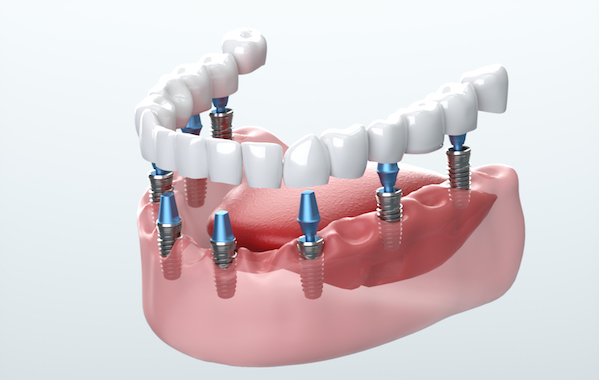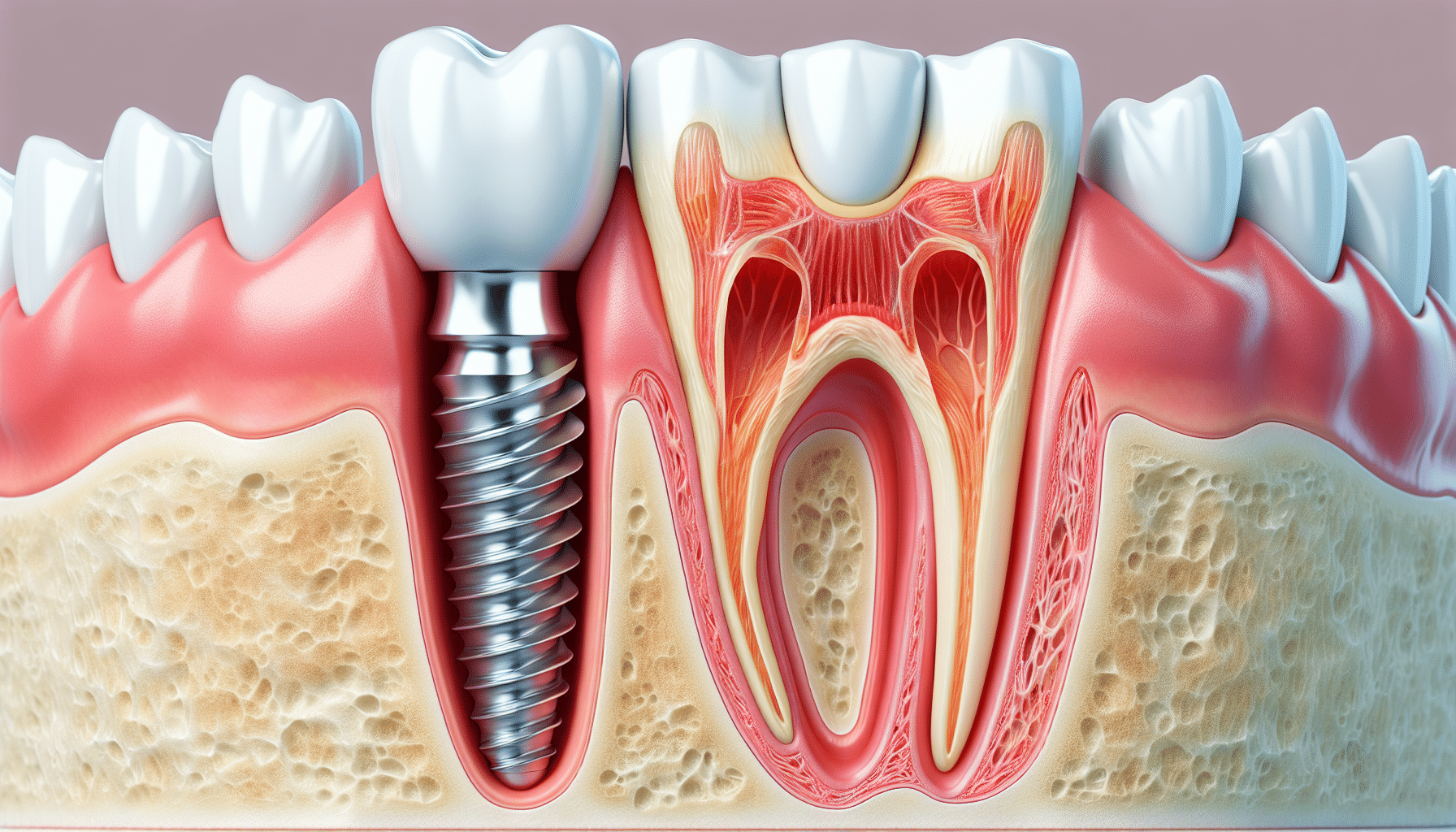Dentist Hartford OH Dental Implant Procedures
Dentist Hartford OH Dental Implant Procedures
Blog Article
Dentist Columbus OH Full Mouth Dental Implants: An In-Depth Overview
Dental implants have revolutionized restorative dentistry, providing a reliable alternative to traditional methods for replacing missing teeth. The integration of dental implants with the jawbone is a fancy organic course of often identified as osseointegration. This Pediatric Dentist Alexandria OH process not only anchors the implant securely but in addition helps keep click to investigate jawbone health, stopping the see page bone loss often associated with missing teeth.
The dental implant itself is usually manufactured from titanium, a biocompatible materials that the body accepts. When an implant is placed in the jaw, it is designed to carefully mimic the foundation of a natural tooth, which is essential for effective integration. The titanium surface encourages the growth of bone cells, enabling the jawbone to bond with the implant over time.
Pediatric Dentist Condit OH What Are Dental Implants? Types, Benefits, and More

Several levels represent the osseointegration course of. Initially, when the implant is surgically positioned into the jaw, a therapeutic period is required for the surrounding bone to start out transforming. During this time, the bone grows around the implant, making a strong and steady basis. This therapeutic time can range, usually lasting several weeks to some months, depending on varied factors, together with the person's general health and the particular location of the implant.
The function of surrounding bone quality is crucial. High-density bone usually offers a better environment for osseointegration compared to lower-density bone. Specialists often consider the standard and quantity of bone before the implant placement to discover out the most effective course of action, which may contain bone grafting procedures in instances of inadequate bone volume. Grafting enhances the chances of profitable integration by creating a more sturdy base for the implant.
The biological mechanisms behind osseointegration involve numerous cellular activities. Osteoblasts, the cells answerable for bone formation, migrate to the implanted space and begin to put down new bone material. Simultaneously, the floor of the titanium implant undergoes modifications that facilitate this bonding process. Some newer implant designs incorporate floor modifications to further improve organic integration.
Dental Center Hartford OH Common Dental Implant Problems and How to Avoid Them
Throughout the integration process, the position of blood provide can't be overstated. An sufficient blood supply nourishes the bone and ensures the correct functioning of the cells concerned within the healing and integration process. Improved blood flow leads to quicker healing and higher outcomes, which is why surgical strategies and aftercare usually prioritize sustaining or enhancing blood circulation to the site of the implant.
Improvements in surgical techniques also contribute significantly to the success rates of dental implants - Dentists Sunbury OH. Minimally invasive strategies and guided implant surgery enable for extra exact placement of implants, lowering trauma to the encircling tissues and doubtlessly dashing up the therapeutic time. The less trauma experienced by the jawbone can result in a extra favorable environment for osseointegration
Mono Implants Condit OH Step-by-Step Guide to Dental Implant Procedures

How a person maintains their oral hygiene after receiving an implant can considerably affect integration success. Proper care around the implant website helps prevent infections, which might disrupt the healing process. Regular dental check-ups are additionally vital to observe the health of both the implant and the encircling gum and bone tissues.
Long-term success with dental implants is often linked to factors such as life-style selections. Patients who smoke or have uncontrolled diabetes could experience lower charges of osseointegration. These conditions intrude with healing and blood provide, making it crucial for individuals considering implants to debate their health history with their dentist.
After the profitable integration of the implant, the following part includes placing the prosthetic restoration, corresponding to a crown. The last restoration must match comfortably and functionally integrate with the present dentition. Smile Care Johnstown OH. Proper alignment and occlusion play important roles in how properly the implant will perform over time
Dental Clinic Hartford OH Common Dental Implant Problems and How to Avoid Them
Dental implants present a long-lasting solution that helps preserve the integrity of the jawbone. When a tooth is misplaced, the bone that after anchored its root begins to deteriorate. Implants stimulate the bone similarly to natural teeth, triggering the jaw to maintain its density and energy. This stimulation is essential for preventing the sunken facial appearance that often accompanies tooth loss.
In conclusion, the mixing of dental implants with the jawbone entails a fancy interaction of organic and mechanical factors. Understanding the osseointegration process can empower individuals to make knowledgeable choices about their dental health. By appreciating the significance of selecting a talented dental professional and adhering to post-operative care, patients can achieve optimal outcomes and luxuriate in restored perform and aesthetics for a few years to come.

- Dental implants mimic the structure of natural teeth and supply a steady basis by integrating with the jawbone through a process called osseointegration.
- The biocompatibility of titanium, commonly used for dental implants, plays an important position in selling profitable bonding with bone tissue.
- Osseointegration usually begins inside a quantity of weeks post-surgery, with the implant floor gradually becoming enveloped by bone cells.
- The mechanical stability of implants is enhanced by their surface roughness, which encourages bone growth and improves the integration process.
- Immediate loading of implants can be feasible in certain cases, relying on bone density and the patient’s general dental health.
- Over time, the jawbone responds to the presence of an implant by present process reworking, contributing to the long-term success of the process.
- Factors corresponding to oral hygiene, smoking habits, and systemic medical conditions can considerably influence the mixing means of dental implants.
- Regular follow-ups and imaging methods, similar to X-rays, can help monitor the success of osseointegration and detect potential complications early.
- The preservation of surrounding bone structure is enhanced by the stimulation provided by dental implants, which may help prevent bone loss in adjacent areas.
- Successful integration not solely restores performance to the tooth but in addition contributes significantly to the aesthetics of the patient's smile and facial structure.undefinedWhat are dental implants and how do they work with the jawbone?undefinedDental implants are titanium posts surgically inserted into the jawbone to function synthetic tooth roots. Once placed, they undergo a course of known as osseointegration, the place the jawbone naturally fuses with the implant, creating a stable basis for the replacement tooth.
How does osseointegration occur?undefinedOsseointegration is a organic process where bone cells develop and connect to the surface of the dental implant. This typically takes several months, throughout which the implant turns into firmly anchored in the jawbone, guaranteeing power and stability for the synthetic tooth.
Premier Dental Columbus OH What Are Dental Implants? Types, Benefits, and More
What components affect the success of dental implant integration?undefinedKey factors embrace the standard and quantity of the jawbone, the patient's general health, and oral hygiene practices. Adequate bone density is essential, as insufficient bone might impede profitable integration.
Is the pain throughout dental implant placement significant?undefinedMost sufferers report minimal discomfort during the procedure, as native anesthesia is used. Post-operative pain is mostly manageable with over-the-counter pain relief medications, and most discomfort subsides within a number of days.
How long does the combination process take?undefinedTypically, osseointegration takes about three to six months. However, this will range based mostly on individual therapeutic processes and the particular conditions of the jawbone.
Can anyone get dental implants?undefinedMost people are candidates for dental implants; nevertheless, certain conditions such as uncontrolled diabetes or severe gum disease could affect eligibility. A thorough evaluation by a dental professional is critical to determine suitability.
Dental Clinic Johnstown OH Dental Implants: Services and Expertise
What could be accomplished if there isn't sufficient jawbone for integration?undefinedIf there's inadequate bone, procedures like bone grafting can be performed to augment the jawbone. Once the graft heals, dental implants can then be placed, allowing for successful integration.
Are there long-term care concerns after getting dental implants?undefinedYes, maintaining wonderful oral hygiene is important for the longevity of dental implants. Regular dental check-ups and cleanings additionally help prevent issues and make sure the ongoing health of the surrounding bone and gum tissue.
Dental Care Johnstown OH Full Mouth Dental Implants: An In-Depth Overview
How do dental implants compare to other tooth replacement options?undefinedDental implants are sometimes thought-about superior to dentures and bridges due to their durability, stability, and the preservation of jawbone health. Unlike different choices, implants fuse with the jawbone, which helps maintain bone density and facial structure.
Report this page